A Trip to Culinary Richness of India
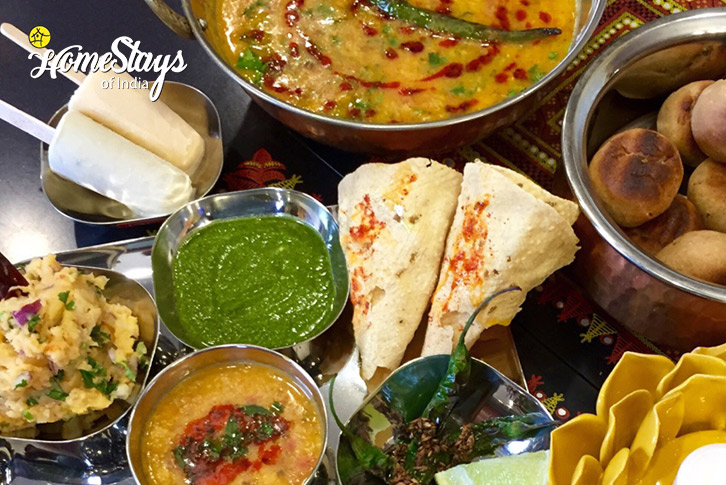
Pic: Weaver’s Paradise Homestay, Jodhpur
The best memory I have from my travels is of a meal I had in a Himalayan village Homestay near Mukteshwar. While we were getting fresh after a long drive, I saw Beena, the lady of the house and our host, picking cabbage, cucumber and some fresh herbs from her organic farm. Soon after, we were served cabbage cooked in pahadi style and locally produced rajma accompanied by rotis smeared with a generous amount of ghee. They came straight from the fire to our plates with love. There was an option of rice as well. To add to it was pahadi raita and salad from freshly picked cucumber garnished with salt mixed with herbs. This was one of the tastiest meals I have ever had. And yes, it’s not just about the food, it’s the holistic meal experience that I got there. The organic ingredients used, the care with which it’s cooked, the traditional way it’s served with love and the company of the local family made it an enriching and a memorable experience.
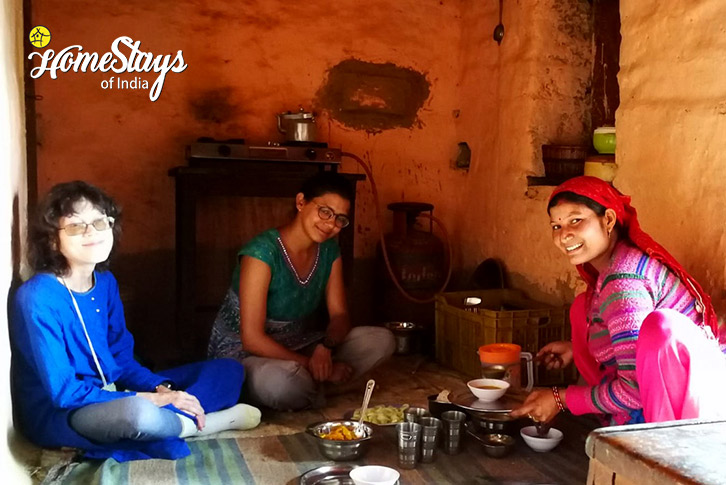
Pic: Little Bliss Homestay, Manali
This is one of the major reasons I prefer homestays over hotels or resorts. With great traditional food flows the interesting conversations with hosts on local style of cooking. And that is what has taught me so many new ways of cooking. Not just this I have also eaten some of the most interesting blends of various cuisines that the hosts have learnt over a period of time from guests from different areas. Once in a remote village in Spiti, on the menu was local pizza. I was amazed that in such a remote place with such limited resources how will the host prepare pizza. It was an interesting way of serving local bread to the foreigners who have not yet adapted to the local taste. The leavened local bread was filled with fresh vegetables and locally produced cheese.
The kind of food and cooking style varies from region to region, and I love this fact about Indian cuisines. Like in Himalayan villages they use a variety of pulses and farm vegetables with a liberal use of Himalayan herbs; In coastal areas the variety of fish cooked in coconut milk or Mustard; Rajasthan is known for its dry food with long shelf life. Let’s take a glimpse on the major cuisines of India.
South Indian Cuisine

Pic: Coffeeana Homestay, Coorg
My first tryst with South Indian food was during one of my trips to Kochi. One day I woke up to the sweet coconut fragrance filled in the whole house and I learned later that the host was frying banana fritters in coconut oil for breakfast. Even today that aroma takes me back to Kerala. It was Onam time and later I got the opportunity to taste ‘Sadya’ in variety of forms in different houses.
South Indian food is known for its low calorie appetising dishes prepared by mixing of rice and lentils. Different root tubers and huge variety of fish are the main ingredients along with chana dal, urad dal, tamarind, plantain, ginger, garlic, coconut and fresh green chillies and dried red chillies. A traditional south Indian meal is typically served on freshly plucked banana leaf. Some authentic and popular South Indian dishes include Chakra Pongal, Sambar and Vadai from Tamil Nadu; Rava Idli from Karnataka; Kadala Curry and Appam from Kerala; and Kebabs and Biryanis from Andhra Pradesh. To experience this culinary treat visit our homestays in South India
Bengali Cuisine
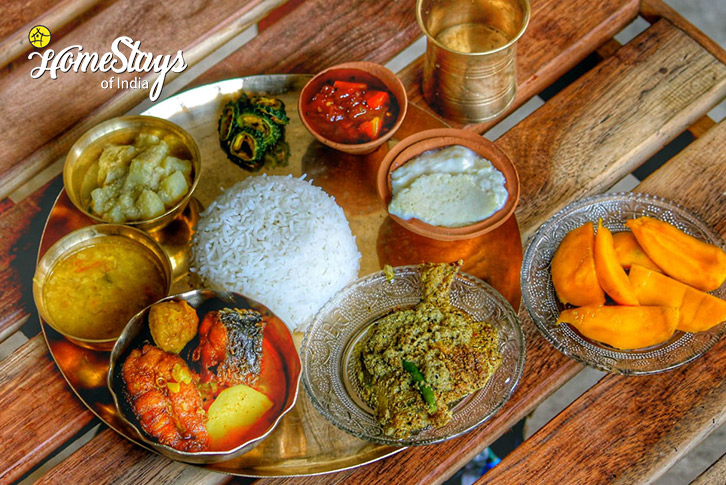
Pic: Singi Homestay, Bardhaman
I got introduced to Bengali cuisine a few years ago when I got married in a Bengali family. It did not appeal me much initially but it grew on me with time. The variety of spices and ingredients are used and there are varied ways of cooking them – the perfect mixing of spices bring out the best flavours. And I specifically like the way it is served.
Bengali food is rich and varied in its platter starting from snacks to main courses to sweets. Bengalis follow a multi-course tradition. Generally a Bengali meal starts with fried vegetables followed by Shak or shukto, Dal, a variety of vegetables, fish/mutton/chicken/egg curry, chutney and ends with a sweet dish like sweet curd and other traditional sweets like sandesh or rosogolla. The specialty of Bengali food lies in the perfect blend of sweet and spicy flavors. With time Bengalis have embraced different culinary influences as well including that of the Mughals, Chinese and British subtly twisting these to suit their own taste-buds. You can plan a trip to West Bengal just to savor its rich cuisine. Check out homestays in West Bengal where you can relish traditional Bengali meals.
Northeast Indian Cuisine
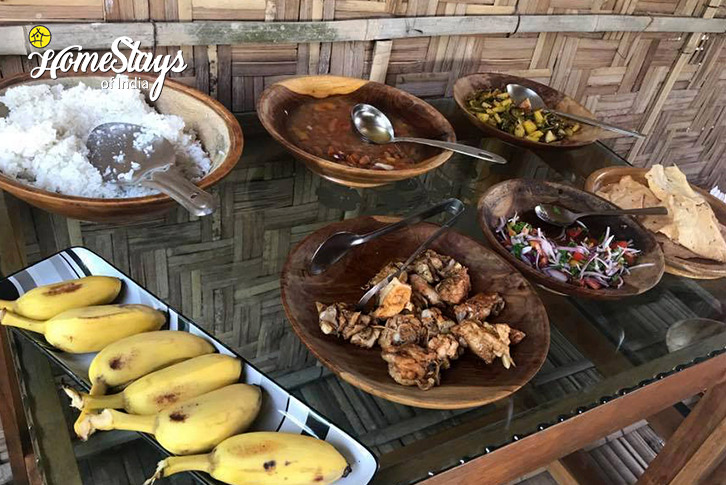
Pic: Diezephe Village Homestay – Nagaland
The Seven Sisters, as the north eastern states are popularly called, are home to many indigenous tribes who nurture within themselves cuisines that are distinct in many ways. The north-east Indian food is inclined towards non-vegetarian. Chilli, ginger, garlic, occasionally sesame and a few local herbs are all it takes to get that distinctive flavor. Interestingly they are bland and yet hot, pungent and yet aromatic, healthy and yet fatty. A meal from the Northeast is incomplete without a steaming platter of rice and green vegetables. Poultry – chicken, duck or geese, beef, pork and freshwater fish provide the protein, but the most defining aspect of northeastern cuisine is the minimal use of spice. To try this unique meal you can visit homestays in Northeast India.
Rajasthani Cuisine

Pic: Gangapole Homestay, Jaipur
Most of us know Rajasthani cuisine by Dal bati churma. I had mine in a homestay in Jaipur along with many other mouthwatering dishes. The cuisine of Rajasthan offers a fabulous variety of dishes that have long shelf life. Beans, dried lentils and legumes like gram flour, bajra and jowar form the main ingredients of many dishes. The royal heritage of the region as well as the gastronomic enthusiasm among locals have led to a wide variety of exquisite Rajasthani dishes starting from main courses to snacks to sweet dishes. Rajasthani breads are made out of conventional staples of the region like corn, barley and millet and ghee is generously used while serving them. Although predominantly a vegetarian region, the influence of the Rajputs who savored non-vegetarian dishes including game meat saw the evolution of several luscious non-vegetarian dishes such as laal maas, jungle maas, khad khargosh and safed maas. Homestays in Rajasthan are the best places to try authentic Rajasthani meal.
Pahadi Cuisine
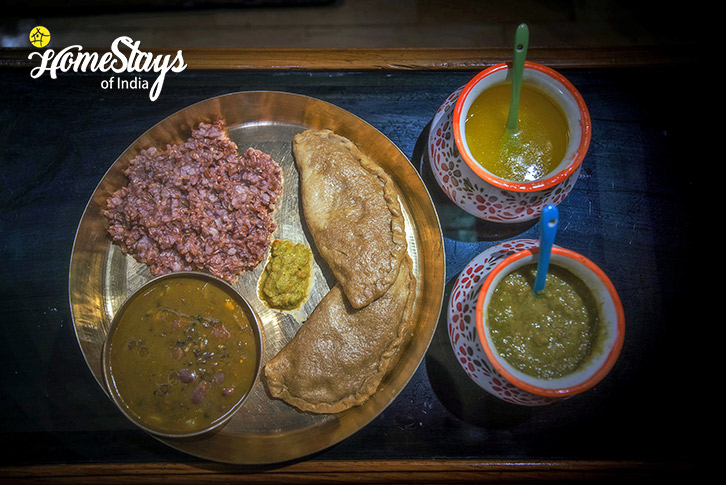
Being a Himachali, I have grown up eating this food. Simple fresh healthy meals right from the farm to plate. Pahadi food is quite distinct in terms of ingredients and techniques. It is amazingly delicious, despite being simple. The use of seasonal foods, fresh spices, himalayan herbs and homemade ghee does all the magic. The savory dishes are mainly dominated by lentils, potatoes, and pahadi vegetables; while the sweets are made using rice, ghee, jaggery, khoya, and dry fruits etc. The Pahadi community get their proteins from river fish, mutton and legumes like Bhat, Gahat and Rajma. Despite the high altitude and cold climatic conditions, they hardly use any oil. Every household owns cattle, so food is cooked mostly in ghee. In the rare event when oil is used, it is mustard oil. Some of the most popular Himachali dishes are madra, siddu, babru, lingur and palda. Most of the Homestays in Himachal provide these delicacies. Bhat ki Churkani, Mandua Roti, Pahadi raita, Chainsu, bhang ke beej ki chutney and some of the most savored foods from Uttarakhand. Pahadi mutton is also delicious and has regional variations. And you know where you will get these – at Homestays in Uttarakhand.
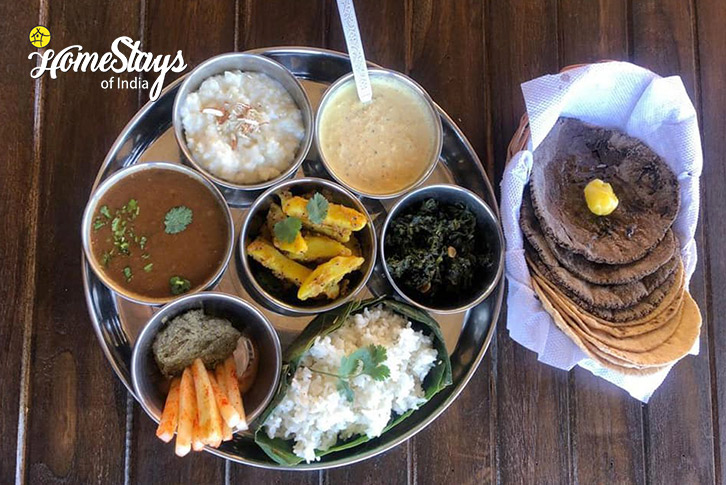
Pic: Hill Orchards Homestay, Kathgodam
Gujarati Cuisine
The people of Gujarat have perfected the art of vegetarian cooking. Much detailing goes into creating a balance of textures and tastes; there is coarse, grainy, granular, smooth, uniform, dry and wet dishes on the same platter, the sweetness, bitterness, sourness and heat of each main course would vary between dishes, and the thali has more colours than a rainbow – the yellow of turmeric, the redness of tomatos, the whiteness of dairy products, the green of leafy vegetables and the brown of pulses have all harmoniously found their place in a single thali.

A typical Gujarati thali includes one or two steamed or fried snacks called farsans, a tuber or a gourd shaak, a green vegetable, yogurt dishes like dahi, kadhi, raita or sweet shrikhand, rice or khichdi, daal, and sweets like halwa, basundi or shrikhand. To relish authentic Gujarati thali, visit homestays in Gujarat.
~ Article contributed by Shailza Sood Dasgupta



Leave a Reply